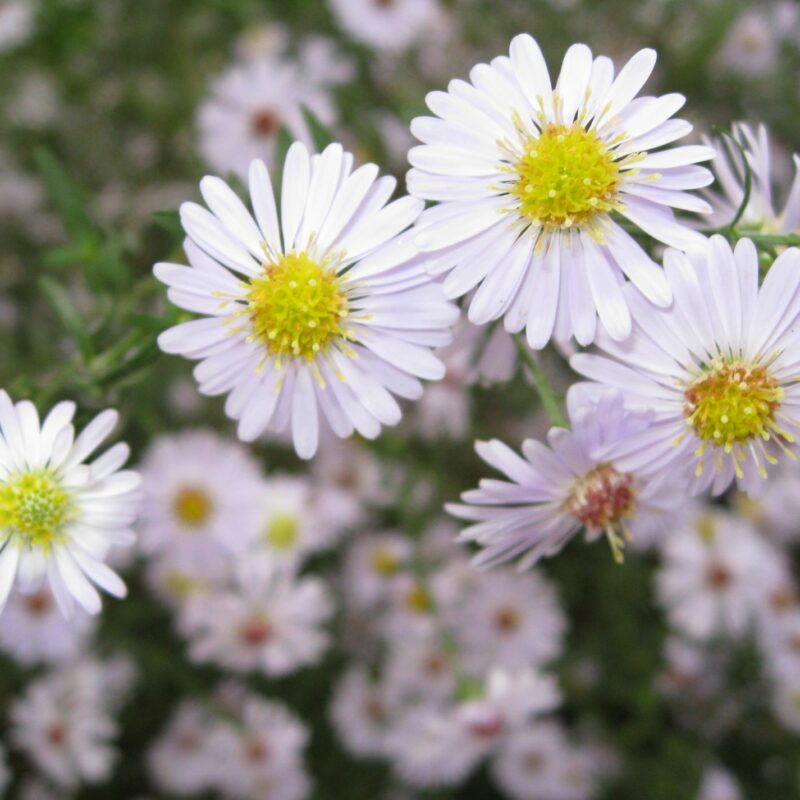Heath AsterSymphyotrichum ericoides
Heath Aster produces white flowers that can sometimes take on a pale blue or pink hue. It thrives in medium to dry soils and easily spreads and self-seeds.
USDA symbol: SYER
General Information
| Plant Type | Forb |
|---|---|
| Height | 3 feet |
| Light Exposure | Sun, Part Sun |
| Soil Moisture | Dry |
| Bloom Color | White |

Tolerances
| Flooding / Inundation Tolerance | Moderate |
|---|---|
| General Resilience | 8 |
| Salt Tolerance | Medium |
| Stress Tolerance | Drought Tolerant |
Pollinator Value: Very High
| Bloom Months | September to October |
|---|---|
| Larval Host of | Bees |
| Specific Pollinators Hosted | Numerous bee species |
| Pollinator Benefit | Insect Pollinated, Provides Nectar, Stem Nesting, Supports Generalists |
Project Planning
| Project Type | Shoreline Buffer |
|---|---|
| Coefficient of Conservatism | 3 |
| Herbivore Sensitivity | Low |
| Lifespan | Perennial |
| Rate of Spread | Medium |
| Soil Stabilization | Shallow |
| Vegetative Reproduction | Clonal |
Range
| County | Anoka, Becker, Benton, Big Stone, Blue Earth, Brown, Cass, Chippewa, Clay, Clearwater, Cottonwood, Dakota, Dodge, Douglas, Faribault, Fillmore, Freeborn, Goodhue, Grant, Hennepin, Houston, Hubbard, Jackson, Kandiyohi, Kittson, Lac qui Parle, Lake, Lake of the Woods, Lincoln, Lyon, Mahnomen, Marshall, Martin, McLeod, Meeker, Morrison, Mower, Murray, Nicollet, Nobles, Norman, Olmsted, Otter Tail, Pennington, Pine, Pipestone, Polk, Pope, Ramsey, Red Lake, Redwood, Renville, Rice, Roseau, Sherburne, Sibley, St. Louis, Stearns, Steele, Stevens, Swift, Todd, Traverse, Wabasha, Waseca, Washington, Watonwan, Wilkin, Winona, Wright, Yellow Medicine |
|---|---|
| Ecoregion | Driftless Area, Lake Agassiz Plain, North Central Hardwood Forests, Northern Glaciated Plains, Northern Lakes and Forests, Northern Minnesota Wetlands, Western Cornbelt Plains |
| Approximate Eco Province | Eastern Broadleaf Forest, Laurentian Mixed Forest, Prairie Parkland, Tallgrass Aspen Parklands |
